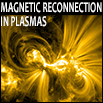Speaker
Dr
Philip Pritchett
(University of California, Los Angeles)
Description
Magnetic reconnection is widely accepted as the driver of dynamics in
the Earth’s
magnetotail despite the difficulty in understanding how reconnection
can be initiated in
a current sheet with curved magnetic field lines associated with a small
normal B_z
component. In particular, reconnection is the favored mechanism for
explaining the
generation of bursty bulk flows and dipolarization fronts despite the
lack of any obvious
mechanism to produce the characteristic cross-tail width of 1-3 R_E for
such fronts
observed in the tail plasma sheet. The results of recent particle-in-cell
simulations in 2D
and 3D that bear on these issues will be discussed.
2D simulations show that an isolated B_z “hump” configuration does
not produce
tearing instabilities. At most, it can generate an ideal-like instability
with a growth rate
an order of magnitude smaller than previous estimates in an open
system that leads to
an earthward shift of the hump and an erosion of the tailward side.
Such an unstable
hump configuration is unlikely to be produced by external driving of a
current sheet
with no B_z accumulation. In 3D simulations the imposition of an
effective anomalous
resistivity localized in the cross-tail direction is used to study the
structure of the
exhaust jets produced by reconnection. Relatively narrow fronts (<10
d_i) expand in
the ion-drift direction to reach widths of 15-20 d_i . Broader initial
fronts (25-50 d_i)
tend to form a 10-15 d_i width higher speed structure on the dawn side
of the front. All
of these fronts exhibit a tendency to filament into structures of order 1-
2 d_i in width,
apparently due to the action of the ballooning/interchange instability.
At longer times,
these finger structures tend to aggregate into structures of order 5 d_i
in width. The
implications of these results will be discussed.
Primary author
Dr
Philip Pritchett
(University of California, Los Angeles)

